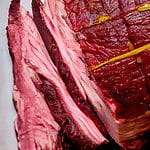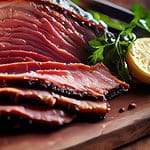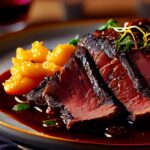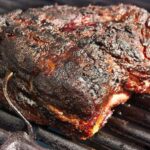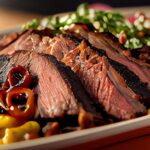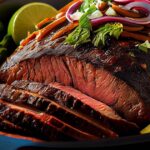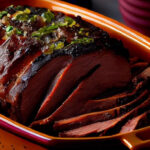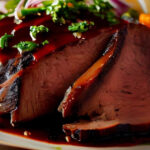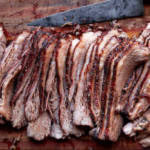How Long To Cook A 15 lb Brisket: Right Timing For Tender & Delicious Results
Cooking a 15 lb brisket can be a bit like a marathon. It will take patience and perseverance to get it just right, but if you follow the right instructions, you will be rewarded with a succulent and delicious meal.
If you’re like me, you’re probably wondering how long it takes to cook a 15 lb brisket. Well, I’m here to tell you that it depends on your cooking method and where you are in the world.
In this article, I’ll share with you the best way to cook a 15 lb brisket and provide you with an estimated cooking time for each method. I’ll also provide some helpful tips for making sure your brisket comes out perfectly every time.
Best Way To Cook A 15-Pound Brisket
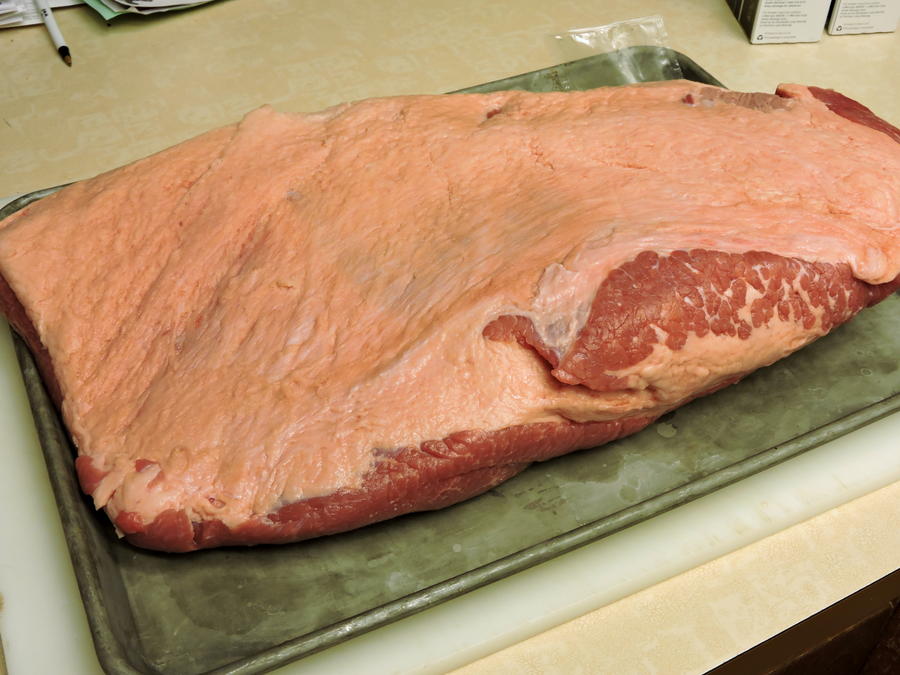
When it comes to cooking a 15-pound brisket, understanding the best way to do it is key. There are many factors that can impact the cooking time and the results you get. To get a tender, juicy brisket, you’ll need to use the right type of smoker and cook it at the right temperature.
I like to start by getting the brisket to room temperature. This can take up to two hours, so plan accordingly. After that, it’s time to get to cooking. For best results, you’ll want to use a combination of both low and higher temperatures. Start by cooking the brisket at a lower temperature for around six hours. This will allow the fat to break down and render, creating a tender brisket. Then, raise the temperature to a higher temperature for the last two or three hours. This will help to crisp up the fat cap, giving you a delicious outer bark.
Throughout the cooking process, you’ll want to monitor the brisket’s temperature with a meat thermometer. Once the internal temperature reaches 200 degrees Fahrenheit, you’re ready to take the brisket out of the smoker. Wrap it tightly in aluminum foil and let it rest for at least one hour. This will help to keep the moisture locked in and to ensure a juicy brisket.
By understanding the best way to cook a 15-pound brisket, you’ll be able to get the best results each time. With the right type of smoker, the right temperature, and a meat thermometer, you can create a tender and delicious brisket that will make your taste buds happy. Now, let’s look at the different types of smokers for brisket.
Different Types Of Smokers For Brisket
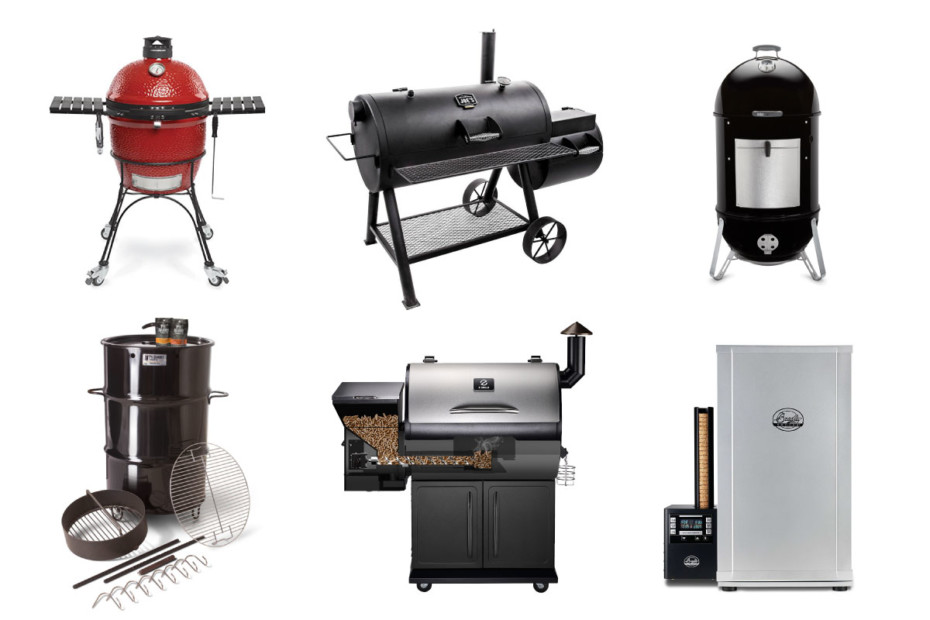
When it comes to cooking a 15-pound brisket, using a smoker is often the best way to get that perfect smoked flavor. There are several types of smokers available, so it’s important to know which one is best for the job. Here are a few of the most popular options when it comes to smoking a brisket:
• Pellet Grill: This type of smoker uses wood pellets as fuel, and it’s a great option for smoking a brisket. Wood chips can be added to give your brisket some extra flavor, and it’s easy to use. Plus, it’s a very efficient way to smoke a brisket.
• Smoker Box: This is a great option if you don’t have a lot of space. It’s a metal box that holds wood chips or pellets, and it fits perfectly over the burner of your grill. You can use it to smoke a brisket, and it’s easy to use.
• Apple Juice: Some people like to add apple juice to the smoker to give the brisket a unique flavor. You can use it in combination with wood chips or pellets, or simply add a few cups of apple juice to the smoker before you start cooking.
• Sweet BBQ Sauce: If you want to add a little sweetness to your smoked brisket recipe, you can use a sweet BBQ sauce. You can brush the sauce onto the brisket while it’s cooking, or you can serve it on the side. Either way, it’s sure to add some extra flavor to your smoked brisket.
These are just a few of the options when it comes to smoking a brisket. Knowing which type of smoker is best for cooking a 15-pound brisket can help to ensure that you get the perfect smoked flavor. With that in mind, let’s move on to how to choose the right size of brisket for smoking.
How To Choose The Right Size Of Brisket
When it comes to cooking a 15 pound brisket, the size of the brisket is an important factor to consider. If you don’t choose the right size of brisket, you may end up with an undercooked or overcooked meal.
For example, let’s say you have a 15 pound brisket and you want to use a dry rub. If you have a whole packer brisket that weighs around 15-17 pounds, you’ll need to cook it for a long time at high temperatures. On the other hand, if you have a flat cut brisket, which usually weighs around 7-9 pounds per pound of meat, you’ll need to adjust the cook time accordingly.
So, it’s important to consider the size of the brisket when planning your meal. If you’re cooking a 15 pound brisket, you’ll want to make sure that you have a whole packer brisket that weighs the full 15 pounds. That way, you can ensure that your brisket will be perfectly cooked. Now that you know how to choose the right size of brisket, it’s time to move on to the next phase of preparing your 15-pound brisket for cooking.
Preparing A 15-Pound Brisket For Cooking
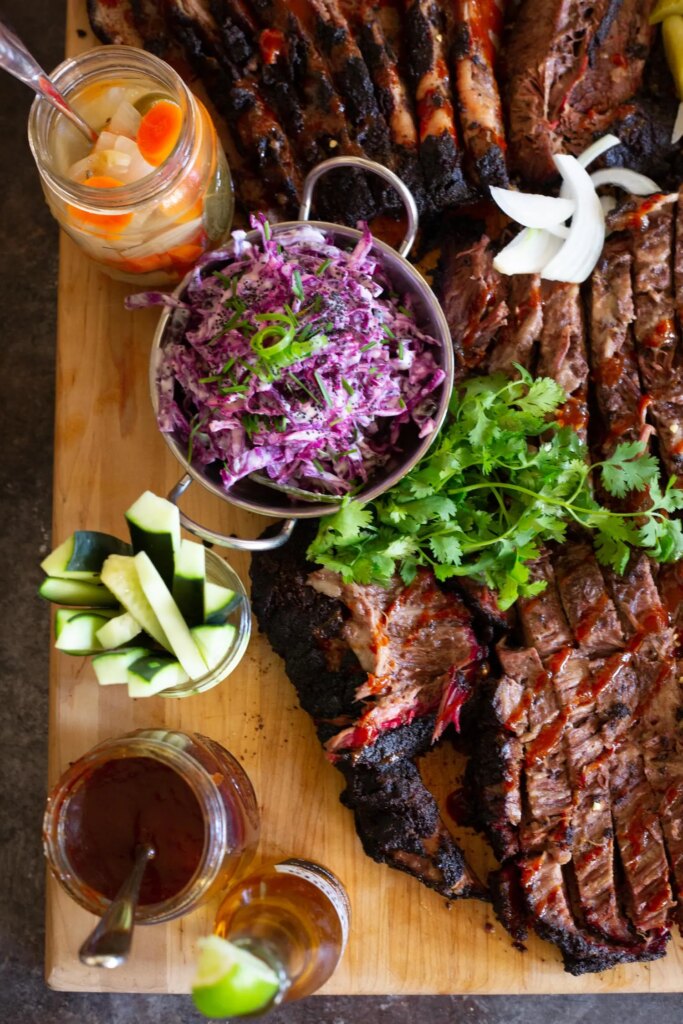
Preparing a 15-pound brisket can seem like a daunting task, but with a few simple steps, you can ensure that your brisket is ready to go for the cooking process. Start by flipping the brisket over so that the fat side is facing up. This will help to ensure that the fat will self-baste the brisket as it cooks, keeping it juicy and flavorful.
Next, you’ll need to trim any excess fat from the whole brisket. This will help to keep the brisket from becoming too greasy as it cooks, and it will also help to reduce the amount of connective tissue that you’ll need to break down during the cooking process. Be sure to leave a thin layer of fat, as this will help to keep the brisket from drying out as it cooks.
When it comes to seasoning, you’ll want to use something simple yet flavorful. I like to use a combination of coarse salt, black pepper, and garlic powder. This will help to draw out the natural flavors of the brisket and will ensure that the finished product is both tender and flavorful.
Once you’ve finished seasoning the brisket, it’s time to wrap it up. I like to use a combination of aluminum foil and butcher paper to wrap the brisket before I put it in the oven. This will help to keep the heat and steam in, ensuring that the brisket cooks evenly and slowly.
Preparing a 15-pound brisket can be time-consuming, but it’s well worth the effort. By trimming the fat and seasoning the brisket, you’ll ensure that the end result is both juicy and flavorful. Then, by wrapping the brisket, you’ll help to keep the heat and steam in, allowing the tough cut of meat to tenderize and cook slowly. With these simple steps, you’ll be well on your way to having a succulent and delicious brisket.
Next up, let’s take a look at some of the common cooking techniques for brisket.
Common Cooking Techniques For Brisket
When it comes to cooking a 15-pound brisket, there are a few common techniques you can use to ensure it comes out perfectly. To start, you’ll want to preheat your oven to 325 degrees Fahrenheit and place the brisket in a roasting pan. The size of your brisket will determine the cooking temperature and the weight of the brisket will determine the amount of time it needs to cook.
For slow cooking, the heat source should be indirect and the temperature should be kept low. This will give your brisket the time it needs to cook through and become tender. You’ll want to make sure the internal temperature reaches at least 160 degrees Fahrenheit in the thickest part of the brisket.
The cooking time for a 15-pound brisket will depend on a few different factors. To get the best results, you’ll want to cook it for a long period of time. With a little patience and some low-temperature cooking, you can easily create a delicious juicy brisket. Next up, we’ll look at the factors that determine how long to cook a 15-pound brisket.
Moving on, let’s take a look at what factors go into determining the cooking time for a 15-pound brisket.
Factors For Determining Cooking Time
When it comes to cooking a big brisket, there are a few factors that can help you determine the total cooking time. A good rule of thumb is to plan for about an hour and a half per pound of brisket. However, the most important factor is to make sure the internal temperature of the meat reaches the perfect level for a tender and juicy brisket.
The best way to know if your brisket is cooked is to use a sharp knife and check the tenderness of the meat. If the knife glides through the brisket easily, then you know you have a perfectly cooked brisket. But, if it takes a bit more effort to get through, then you’ll want to give it some extra time in the oven.
When cooking a 15-pound brisket, you’ll want to make sure you give yourself plenty of time to ensure it’s cooked to perfection. Once your brisket is out of the oven, you’ll want to let it rest for at least 30 minutes. This will help to lock in all that smoke flavor, as well as keep the flat cut moist and juicy.
With all of these factors in mind, you can ensure that your 15-pound brisket is cooked to perfection. By paying attention to the internal temperature of the meat, the tenderness of the brisket, and allowing it to rest, you’ll be sure to have the most delicious and tender brisket you’ve ever tasted. Now, let’s move on to talk about the benefits of using a meat thermometer.
The Benefits Of Using A Meat Thermometer
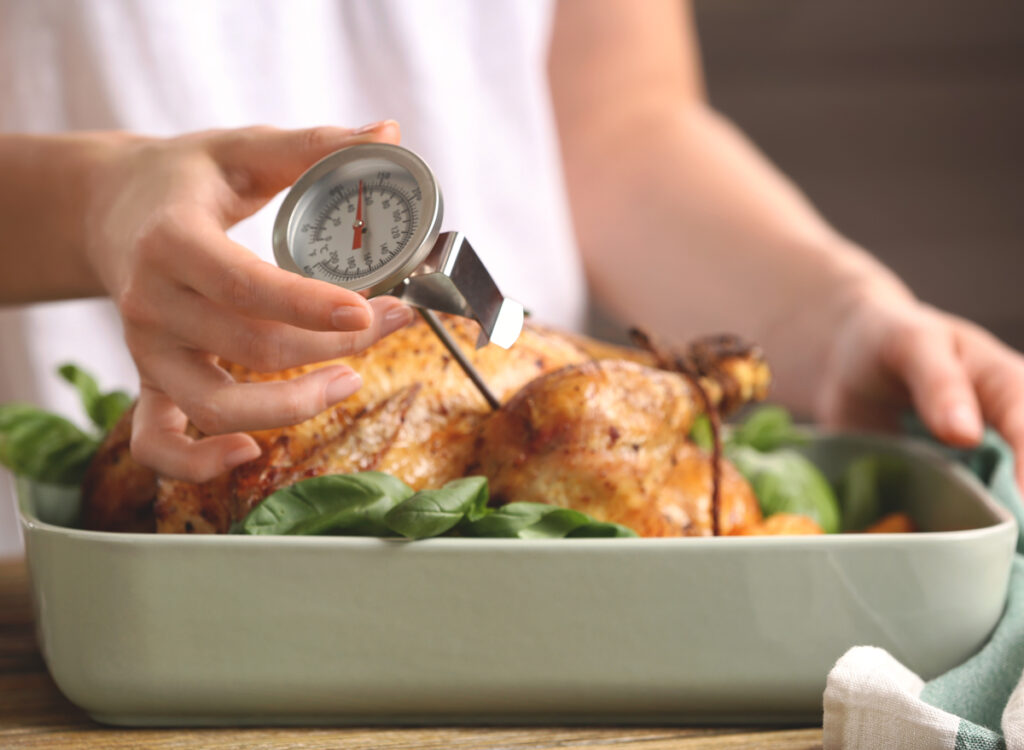
In regards to cooking a 15-pound brisket, the most important factor is ensuring that the meat is cooked to the right temperature. Even if you think the brisket is done, if the temperature isn’t right, you won’t get the best results. One of the best ways to make sure the meat is cooked correctly is to use a meat thermometer. That’s why it’s always a good idea to have one handy in the kitchen. Use another phrase instead of “when it comes to”
It’s no secret that brisket is a tough cut of meat, and it often has a lot of fat that needs to be cooked off. But the irony is that if you cook the brisket too long, it can become dry and tough. That’s why it’s so important to use a thermometer to check the internal temperature of the meat. That way, you can get the best results and leftover brisket that’s juicy and tender.
To use a meat thermometer, start by preheating your oven to the desired temperature. Then, place the brisket on a baking sheet and insert the thermometer into the thickest part of the brisket. Make sure the thermometer isn’t touching any bones or fat, as this could give you an inaccurate reading. As the meat cooks, you’ll need to check the thermometer regularly to make sure the internal temperature is reaching the desired temperature.
Using a meat thermometer is an essential step in making sure your brisket cooks correctly. It’s a good idea to have one handy in the kitchen, as it can help you achieve the best results and the juiciest and most tender brisket. With the help of a thermometer, you can be sure that your brisket is cooked to perfection.
With that in mind, let’s move on to the next topic: tips for tenderizing tough cuts of meat, such as brisket.
Tips For Tenderizing Tough Cuts Of Meat (hint: Brisket)
Tenderizing tough cuts of meat is often a necessary step for making a delicious and juicy brisket. To make sure your brisket is as tender and flavorful as possible, there are a few tips that you can follow.
First, it’s important to understand the best way to tenderize the meat. Generally, a good rule of thumb is to use a meat thermometer to check the internal temperature of the brisket before you cook it. This will help you determine if the meat is tough or tender and give you an idea of how long it may need to cook.
Another fast method to tenderizing tough cuts of meat is to cut the excess fat away from the brisket. This can be done on a cutting board using a sharp knife. Once you have removed the fat, take a paper towel and pat the brisket dry. Then, you can season the brisket with garlic powder and other spices of your choice.
Wrapping the brisket in pink butcher paper before cooking it can also help to make it tender. This will help to lock in the juices and create a juicy brisket. Once you have the brisket wrapped up, place it in the oven and cook it for the recommended amount of time.
By following these tips, you can get the most tender and flavorful brisket possible. Now that you have the basics down, it’s time to move on to utilizing dry rubs and sauces for a truly flavorful brisket.
Utilizing Dry Rubs And Sauces For Flavorful Briskets
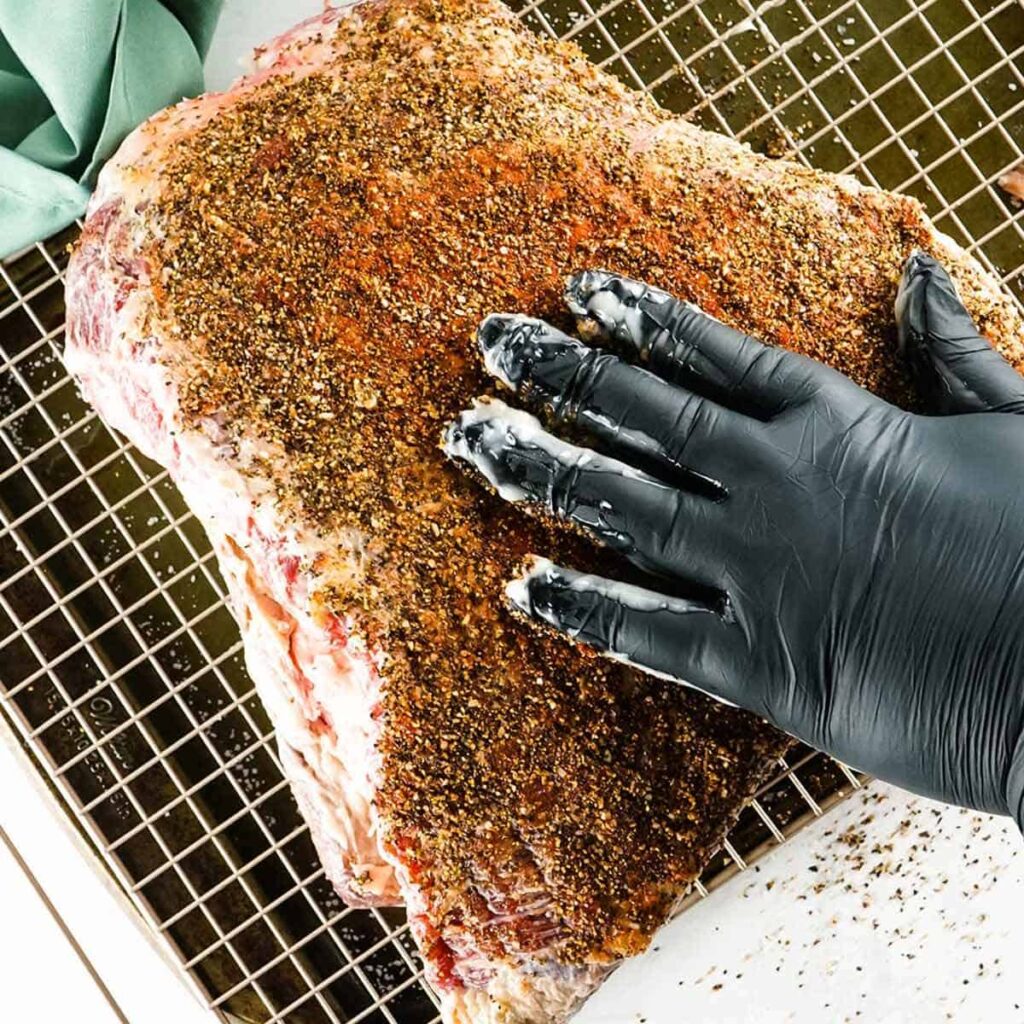
When it comes to cooking a 15 lb brisket, it’s important to think about how you want to season it. While there’s no definitive answer to this question, there are a few different ways you can go about it. Dry rubs and sauces are both great options for adding flavor to a large cut of beef, and it all comes down to personal preference.
Do you want to spend less time seasoning your brisket and more time focusing on the cooking process? A dry rub might be the way to go. It’s a good thing that this type of seasoning doesn’t require much time. All you have to do is spread it evenly over the brisket and let it sit for a few hours so the flavors can really sink in.
Alternatively, you could opt for a sauce. This takes a little bit more time since you have to brush it over the brisket and let it sit for a few hours. However, if you have the time, it can be a great way to take your brisket to the next level.
No matter which method you choose, it’s important to remember that the specific time for seasoning will vary depending on your personal preference. So, how can you make sure you get it just right? The answer lies in understanding the difference between low and high temperatures for brisket cooking.
To ensure that you get the most out of your seasoning, it’s important to understand how different temperatures can affect the flavor of your brisket. With this knowledge in hand, you can move on to the next step in your brisket-cooking journey: understanding the difference between low and high temperatures for brisket cooking.
High And Low Temperature For Beef Brisket Cooking
When it comes to cooking brisket, understanding the difference between low and high temperatures is key. The first step is to figure out what temperature you need to cook your brisket to. It may be tempting to just turn up the heat for a faster cooking time, but the key to achieving a juicy and flavorful brisket is to cook it low and slow. Here are four key elements to consider when determining the best temperature for your brisket:
1. The size of your brisket. The larger the brisket, the lower the temperature you’ll need to use. This is because larger pieces of meat require longer cooking times in order to reach the internal temperature of the desired doneness.
2. The type of brisket you buy. If you buy a pre-marinated brisket from the grocery store, you want to make sure to adjust the cooking temperature accordingly. Pre-marinated briskets are typically cooked at a higher temperature, so if you’re cooking a brisket for the first time, it’s best to reduce the temperature.
3. The type of smoker you’re using. Different smokers use different types of fuel, and each fuel requires a different temperature. For example, if you’re using a charcoal smoker, you’ll need to use a lower temperature than if you were using a gas smoker.
4. The desired doneness. If you’re looking for a juicier and more tender brisket, you’ll want to cook it at a lower temperature. For a crispier, more caramelized brisket, you’ll need to cook it at a higher temperature.
By considering these four key elements, you can determine the best temperature for your brisket. And, once you have the temperature figured out, you can move on to the next step of wrapping your brisket in foil or butcher paper to ensure maximum flavor and juiciness.
Why Wrapping Brisket In Foil Or Butcher Paper
Wrapping your brisket in either foil or butcher paper can be a game-changer when it comes to cooking a juicy and tender brisket. Did you know that wrapping your brisket in foil or butcher paper can reduce cooking time by up to 40%? Not only does this result in a more tender and juicy brisket, but it also prevents it from drying out and ensures that the flavors stay locked in.
I like to wrap my brisket in butcher paper, as this helps to keep the moisture locked in and prevents it from drying out. You’ll want to make sure that the paper is tightly wrapped around the brisket to ensure that no moisture escapes. If you choose to use foil, then you’ll want to make sure that it’s enough to cover the brisket entirely.
Wrapping your brisket in either foil or butcher paper can help to keep it moist and juicy. This is something that every pitmaster should consider when cooking a brisket, as it can make a huge difference in the end result. Plus, it can save you time, which is always a bonus when it comes to slow-cooking.
That said, it’s important to remember that there is more to cooking a juicy and tender brisket than just wrapping it in foil or butcher paper. Next, let’s take a look at the role of fat in cooking a juicy brisket.
The Role Of Fat In Cooking A Juicy Brisket
When it comes to cooking a juicy brisket, fat plays an important role that should not be overlooked. Here are a few tips to consider when using fat in your brisket:
• Fat is your friend when it comes to brisket. It helps to keep the meat juicy and tender, and it also adds flavor.
• To help keep your brisket moist and juicy, use a fat cap. This is a thick layer of fat that sits on top of the brisket.
• If you don’t have a fat cap, you can use beef fat or butter to baste your brisket as it cooks.
• Wrap your brisket in foil or butcher paper to help keep it moist and juicy. This will also help to keep the fat from dripping off.
• Make sure to save the drippings from your brisket. They can be used to make a delicious gravy or to add flavor to other dishes.
Using fat to your advantage when cooking a brisket can help to make it juicy, tender, and flavorful. With these tips, you’ll be sure to make a delicious brisket that your family and friends will love.
Now that you understand the role of fat in cooking a juicy brisket, it’s time to turn our attention to knowing when to rest the brisket after cooking.
Knowing When To Rest The Brisket After Cooking
When cooking a juicy brisket, it’s important to know when to rest the meat after it’s finished cooking. According to the experts, you should let the brisket rest for about 45 minutes for every pound of the meat. So for a 15-pound brisket, that’s a rest time of at least 675 minutes. This allows the juices to redistribute evenly throughout the meat, resulting in a juicier and more flavorful brisket.
I like to wrap the brisket in some aluminum foil and put it in a cooler or insulated container while it rests. This will help to keep the brisket warm and juicy. Once the rest period is over, you’ll be ready to slice and enjoy!
Moving on, let’s take a look at the recommended time and temperature settings for a 15-pound brisket.
Recommended Time And Temperature Settings
Now that we know when to rest a 15-pound brisket, it’s time to discuss the optimal time and temperature settings for cooking it. According to the USDA, the internal temperature of a cooked brisket should reach at least 145°F, and it should be allowed to rest at least 30 minutes before serving.
| Oven Temperature | Approximate Cooking Time |
|---|---|
| 225-250 degrees Fahrenheit | 18-24 hours |
| 250-275 degrees Fahrenheit | 14-18 hours |
| 300-325 degrees Fahrenheit | 12-14 hours |
It is important to note that these cooking times are approximate and can vary based on factors such as the type of oven, the desired level of doneness, and the specific cut of meat. It is always best to use a meat thermometer to accurately determine the internal temperature of the brisket and cook it to your desired level of doneness.
Here are some general guidelines for determining the level of doneness based on internal temperature:
| Internal Temperature | Level of Doneness |
|---|---|
| 120-125 degrees Fahrenheit | Rare |
| 130-140 degrees Fahrenheit | Medium Rare |
| 145-155 degrees Fahrenheit | Medium |
| 160-165 degrees Fahrenheit | Medium Well |
| 170-180 degrees Fahrenheit | Well Done |
When it comes to cooking times, it’s important to keep in mind that a 15-pound brisket can take anywhere between 12 to 24 hours to cook. I like to plan for 18 hours, just to be on the safe side. Depending on the size of your brisket, the cooking time may vary, so it’s always a good idea to keep an eye on the temperature of the meat.
To ensure that your brisket is cooked through and juicy, I recommend setting your oven to 250°F and cooking your brisket for 18 hours. This should give you a perfectly cooked brisket, with a nice and juicy texture. For added flavor, you can even season the meat before cooking, or add a marinade or sauce during the cooking process.
From here, we can move on to troubleshooting tips for achieving perfectly cooked brisket. Taking the time to follow these tips will help to ensure that your brisket is cooked perfectly, every time.
Troubleshooting Tips To Achieve Perfectly Cooked Brisket
In regard to cooking a 15-pound brisket, things can get tricky. If you don’t have the exact time and temperature settings, it can be hard to get that perfectly cooked brisket. That’s why we’ve put together some troubleshooting tips to help you out.
First off, it’s important to make sure your oven is preheated and at the right temperature before you begin. This will ensure that your brisket cooks evenly and doesn’t dry out. If you’re unsure of the temperature, use a thermometer to check and make sure that it is at the desired level.
Also, you’ll want to keep an eye on the brisket as it cooks. The internal temperature should reach at least 165°F before you take it out of the oven. If it doesn’t reach that temperature after the recommended cooking time, then you may need to give it a few extra minutes.
Finally, if you want your brisket to be as tender as possible, you’ll want to let it rest for about 20-30 minutes when it is finished cooking. This will help to make sure that the juices are evenly distributed throughout the meat and will ensure that it is perfectly cooked.
Although it may seem like a difficult task, cooking a 15-pound brisket doesn’t have to be a daunting task. With the right time and temperature settings, and a few troubleshooting tips, you’ll be sure to have a perfectly cooked brisket that your family and friends will love. So don’t be afraid to take on the challenge—you can do it!
Bottom line
Cooking a 15 lb brisket is not a task to be taken lightly. It takes time and patience to ensure that the meat is cooked properly and evenly. To get the most out of your brisket, it is important to take the time to plan out the cooking process and be mindful of the temperature, time, and other factors that can affect the cooking process.
By following the steps outlined in this article, you should be able to successfully cook a 15 lb brisket in a relatively short amount of time. You can even experiment with different cuts or seasoning to customize your brisket to suit your tastes.
Cooking a 15 lb brisket can be a daunting task, but with the right knowledge and preparation, you can make sure that it turns out perfectly every time. With a little practice, you can learn the ins and outs of cooking a delicious brisket that is sure to be the star of any barbecue!
More Brisket Recipes & Resource
Butcher’s Prime Brisket Injection Recipe
Cost of Deliciousness: How Much is Brisket and Why is it Worth it
Easy Masterbuilt Smoked Brisket Recipe for Tender, Juicy Success
Perfect Cook Time for Smoking a 2-Pound Brisket
Cooking the Perfect Pit Boss Brisket Recipe (with 3 Smokers)
Delicious Traeger Brisket Recipe to Elevate Your BBQ Game
Franklin BBQ Brisket Recipe: The Best Brisket You’ll Ever Taste
Brisket Flat Recipe: A Step-by-Step Guide to Tender, Juicy Bliss
How Much Brisket to Feed 50 People: A Chef’s Guide

Shara @The Bird BBQ
Shara loves to experiment with different flavors and techniques when it comes to BBQ. She has been perfecting her craft for years and loves hosting backyard BBQs with friends & family. She often comes up with creative recipes that her guests rave about.

